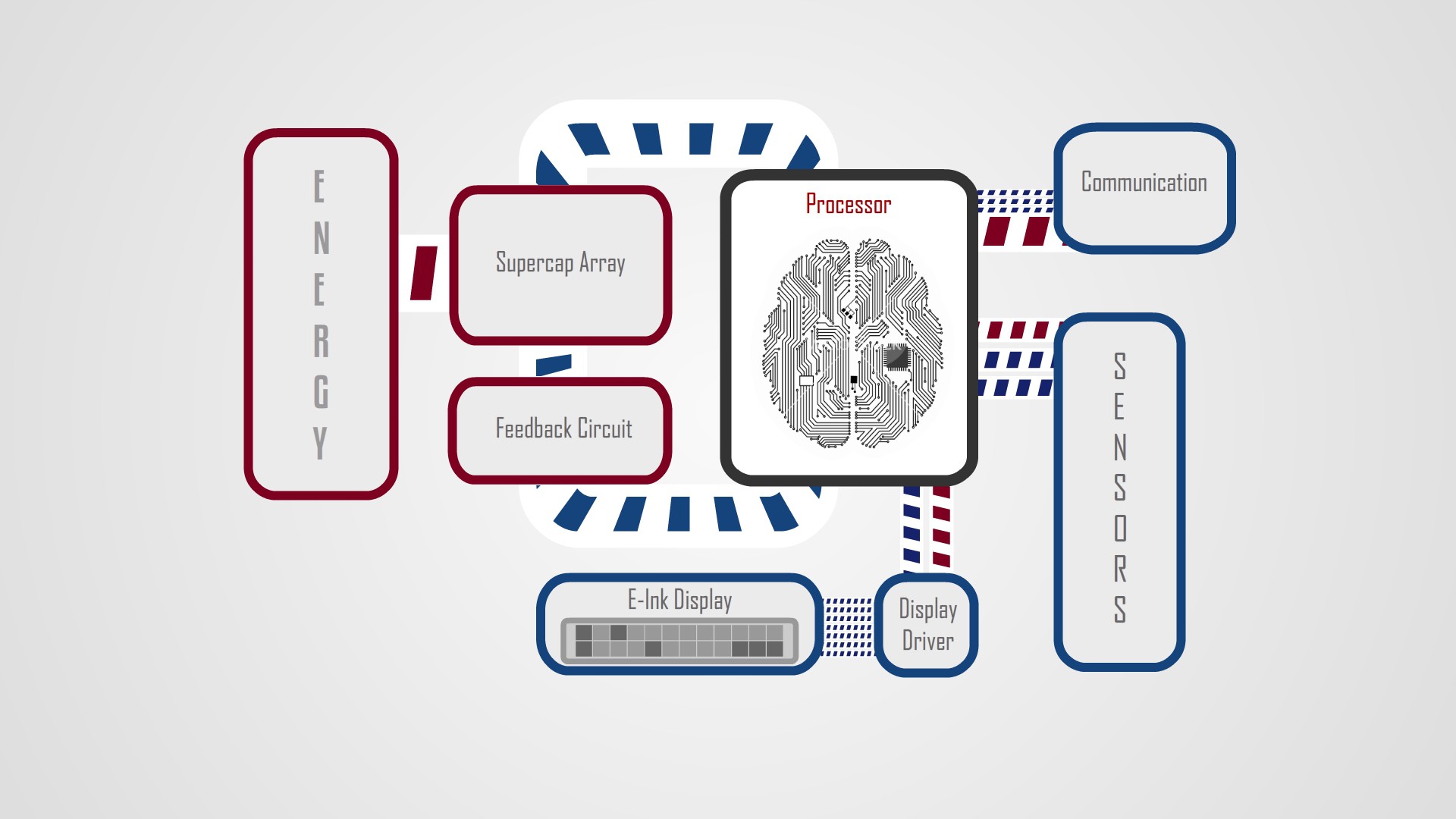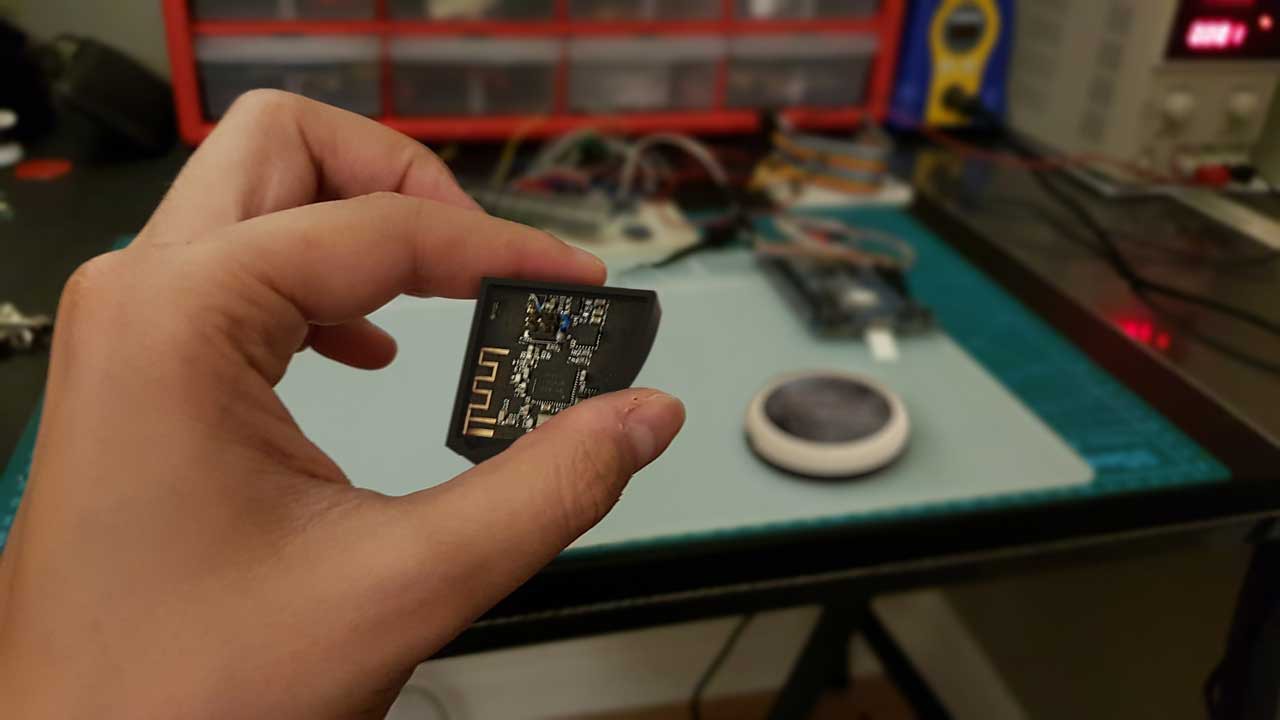The device for the moment is called the SmartNode, go figure! Check out the video below for more information.
The elevator pitch of this product would be that it's a sensing and analysis device designed to operate on very long timescales and adapt to any environment, allowing extreme power efficiency when operating power hungry sensors and communication by smartly scheduling and organizing how it uses it's power.
With a potted waterproof enclosure designed for harsh environments The goal is to operate anywhere in the world, compute and relay important information. The device collects ambient energy from a multitude of sources. It self adjusts its energy use to collect and analyze important information as efficiently as possible. Harvesting modules, communication modules and sensors can be selected specifically for intended applications or projects.
A library or webtool, will be made for users to share and build programs for specific uses (Think - Thingiverse but for software) creating an open platform to develop on with sample libraries and code bits.
By making SmartNode out of mass produced modular parts, this helps keep it's price economical and more attractive than custom made IOT sensing devices specifically for one purpose
Depending on the available power, the frequency of data capture can be adjusted and regulated to log accurately and regularly at scheduled intervals. Due to the nature of the device it's limited to passive readings instead of realtime monitoring but depending on the combination of modules data collection could be realtime when it needs to be. IE: using solar in the daytime, using vibration harvesting on moving vehicles. etc. certain use cases would allow for high frequency data capture when it counts, then logged, analyzed and communicated during rest or downtime.

Energy is precision controlled, a low power microprocessor in the microamp range controls the wakeup and sensing profiles according to energy harvesting setting up charge "profiles" for each new task that are being buffered. The processor can then sleep in the nano amp range keeping valuable information on hand for runtime. Many MEMS sensors and components can monitor in the micro amp range and for those that cant, the processor can determine how long the device needs to operate and how much energy needs to complete its task. From preliminary tests, there is very little the device cant run or power with time, and with a device that has no battery to worry about, data can be collected and communicated effectively almost anywhere at any time.

Each module is still a work in progress, the final layout would be a frame housing the energy harvesting portion. At the moment a Solar shell is what I'm currently working on. in this shell, 3 modules can be placed. a half module and two quarter modules. The half module stores the power array and processor. The Quarter modules store the communication and sensor modules. Sensor modules would have sensors such as an accelerator, temperature, moisture, humidity, audio, proximity, magnetic, motion and position, liquid level and air quality, smoke or barometric. These quarter modules can also be used as external indicators, - lights, indicators, e-ink, etc. The Half modules contain things like communication, Bluetooth, wifi, proprietary frequencies, mesh networks etc. The intended function of the device can be customized with many modules and combined sensors and programs.

The goal is to end up with something extremely versatile. Adaptable to many situations and with a large library of uses and examples to go with modules.
Here are a few examples of uses:
Industrial plants utilizing an array of SmartNodes across an expanse of difficult terrain where running cables or individual equipment network connections is cost prohibitive. The nodes could monitor activity, temperature, excessive vibration or log wear...
 Kyle Fredericks
Kyle Fredericks